Setting Boundaries in Blended Families: When Saying No to Babysitting Sparks Conflict
In the intricate dynamics of blended families, expectations can sometimes blur the lines of responsibility. A 20-year-old college student, living independently, found herself at the center of a familial dispute when she declined to babysit her stepsister’s infant. Despite her clear boundaries and prior commitments, her refusal was met with hostility from her father’s wife and stepdaughter, culminating in derogatory remarks and strained relationships.
This situation underscores the challenges faced by individuals in blended families, especially when navigating obligations that may not align with personal boundaries or schedules. It raises pertinent questions about the extent of responsibilities among step-siblings and the importance of respecting individual autonomy within family structures.
Family is supposed to be a source of love, support, and connection but sometimes, it can feel like an unending list of demands

The author’s father remarried and lives with his new family, but her stepsister gave birth months prior
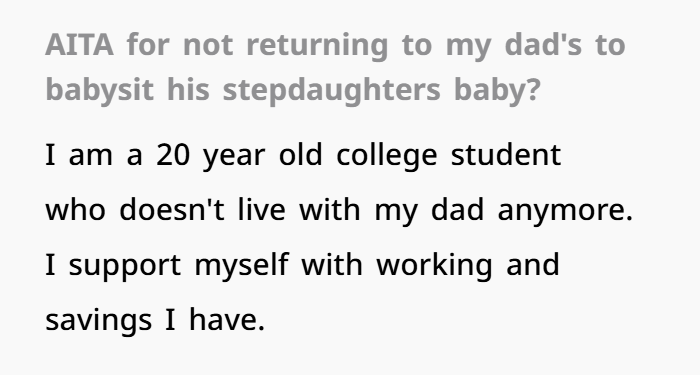



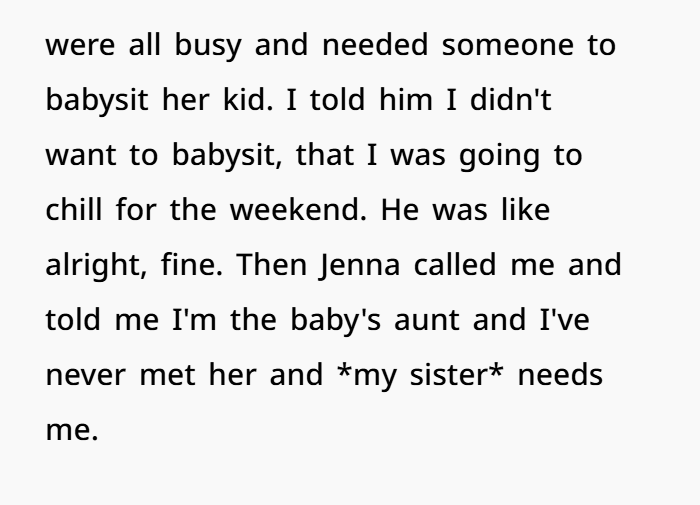
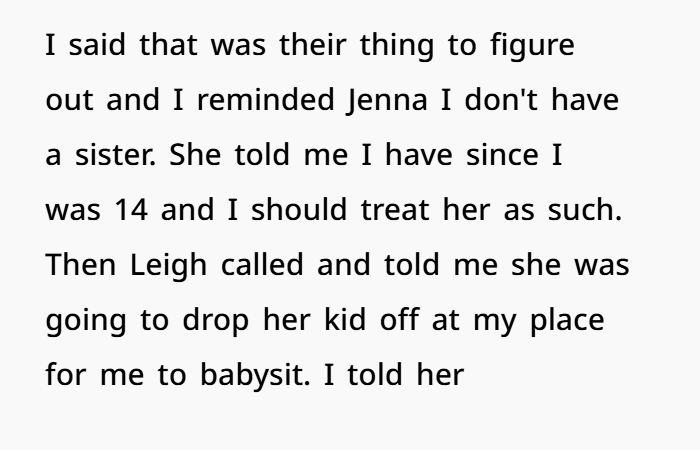


Understanding Step-Sibling Dynamics
Step-sibling relationships, formed through the union of parents, often lack the shared history that biological siblings possess. The depth of these relationships can vary widely, influenced by factors such as the age at which the families merged and the quality of interactions over time. While some step-siblings develop close bonds, others maintain more distant relationships, making it essential to recognize and respect individual comfort levels and boundaries.
The Importance of Consent in Caregiving Roles
Assigning caregiving responsibilities, such as babysitting, should always involve the consent of the individual. Assuming that a family member, especially one not residing in the household, is available or willing to provide childcare can lead to misunderstandings and resentment. Open communication and mutual agreement are crucial to ensure that responsibilities are shared willingly and do not infringe upon personal time or obligations.

Recognizing and Avoiding Parentification
Parentification occurs when a child or young adult is placed in a role where they are expected to take on responsibilities typically reserved for parents, such as caring for younger siblings. This dynamic can lead to undue stress and hinder personal development. It’s vital for families to be aware of this phenomenon and ensure that responsibilities are age-appropriate and do not overburden younger family members.
Establishing Healthy Boundaries
Setting and maintaining personal boundaries is essential for mental well-being and healthy relationships. In blended families, where roles and expectations can be complex, clear communication about one’s limits and capacities helps prevent misunderstandings. Respecting these boundaries fosters mutual respect and understanding among family members.
Netizens were surprised at the entitlement of the stepmother and stepsister, applauding the author for standing her ground


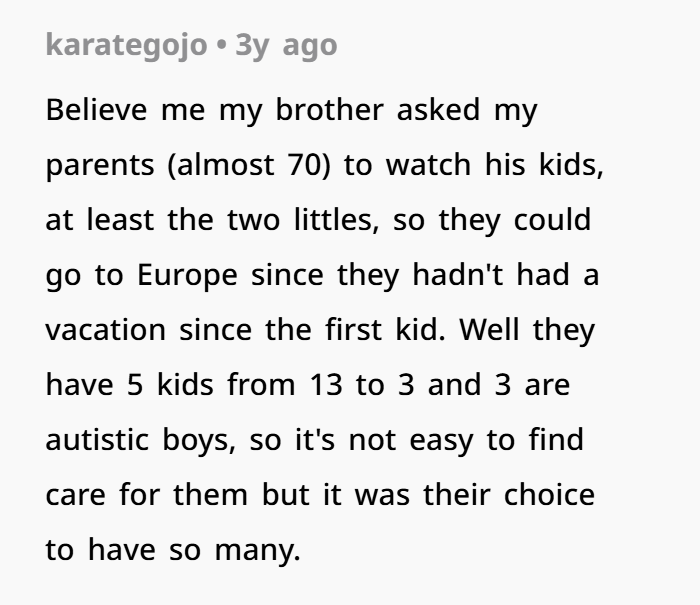

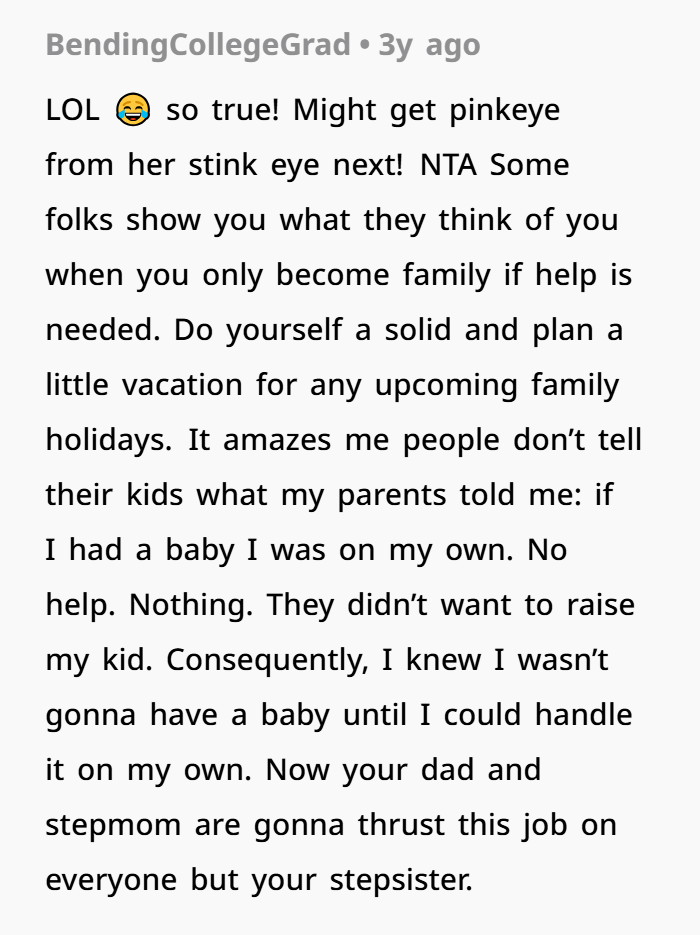
The challenges faced by individuals in blended families highlight the importance of clear communication, mutual respect, and understanding. Recognizing the unique dynamics at play and ensuring that responsibilities are assigned with consent can help maintain harmony and respect within the family unit.


